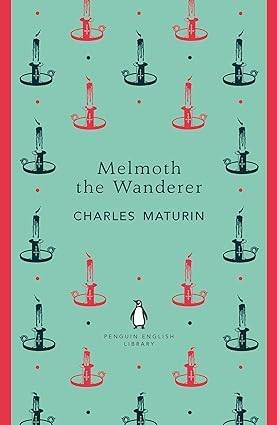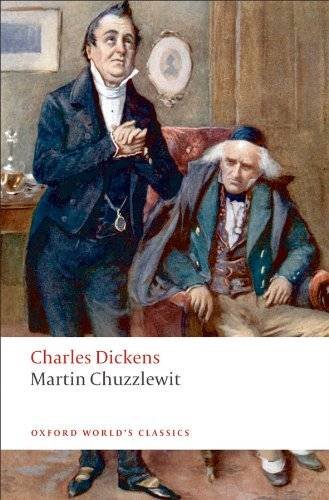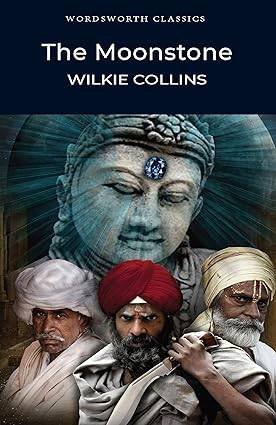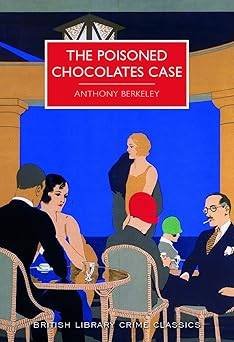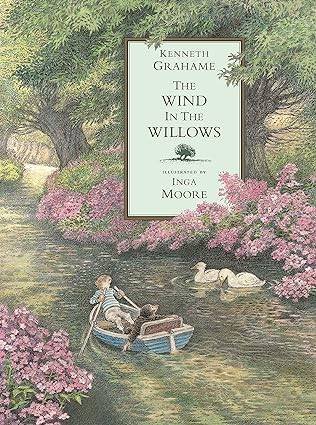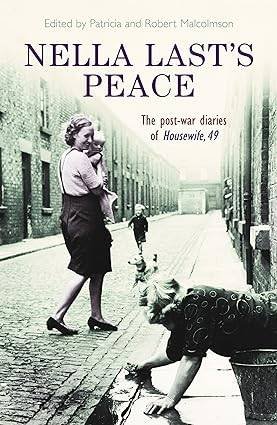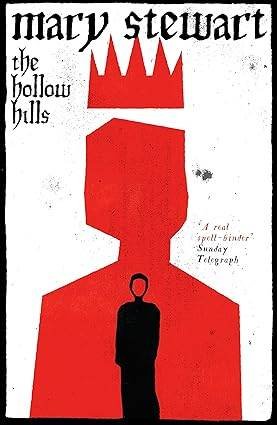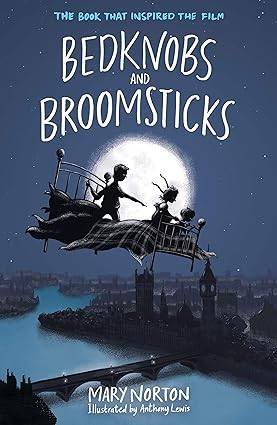Home » Book Reviews » Charles Maturin » Melmoth The Wanderer by Charles Maturin
Possible spoilers ahead
I’ve been quite fascinated to read this book, as after reading Sarah Perry’s book Melmoth and learning that she was inspired by this book, I was then keen to read the original and also hoped it may answer some of the questions that I was left with from Perry’s book.
The introduction says ‘Melmoth has sold his soul to the devil in return for prolonged life and must stand by the agonising consequences of his bargain, unless he can persuade someone to take his place. He appears to his several victims at the moment of their greatest suffering and degradation, but none of them dares to escape from misery at the expense of his terrible offer’. So one of my questions from Perry’s book was whether Melmoth was good or bad, devil or angel, but the Melmoth in Maturin’s book seems to be more devil than angel. And it’s interesting that Perry’s Melmoth didn’t seem to be searching for someone to replace her but more searching for someone to accompany her (or at least it seemed that way to me).
In 1816 John Melmoth goes to his dying Uncle Melmoth in Ireland, who is a selfish and ungrateful miser. John sees a portrait in his uncle’s locked closet, dated 1646 and labelled J Melmoth, and he thinks he sees the eyes move in the portrait. His uncle then tells him that he is dying of fright as the person in the portrait is still alive, even though over 150 years have passed. As the uncle is just about to die, the door to his bedroom opens and John sees someone who resembles the man in the portrait, though he tries to convince himself this is just a similarity and not the actual person. The person summons him, but at that moment his uncle dies so John does not obey the summons. In his uncle’s will, John is urged to destroy the portrait, and to burn a manuscript stored in a cupboard underneath the portrait, ideally not reading the manuscript first. Ooooh, this is a great start to a book, very dramatic and gothic, I am hooked!
John asks the housekeeper for more details about his uncle’s life prior to his death, and she says that in the last two years he was often reading in his chamber though he always hid what he was reading, and that a few days before his death he collapsed and when revived he pointed outside to the courtyard where the housekeeper saw a man walking through the locked courtyard. John is then told an old family story about an elder brother of his Irish family who lived on the Continent and was not seen for many years, but then came back to visit the family and appeared not to have aged at all, the brother didn’t explain anything but left the portrait and then never came back again. The tale continues that several years later a man called Stanton came from England wanting information on the elder brother, and he left the manuscript behind him, he said that he had met the elder brother, calling him ‘John Melmoth the Traveller’, and he added that rumours stated that the brother only appeared at the approaching death of a member of the family who has had evil passions or habits.
John reads Stanton’s manuscript, which tells of his travels in Valencia in 1676 during a storm where a young couple were killed by a flash of lightning and a man mysteriously appeared and laughed at the corpses. The tale then moves to a deserted house where the housekeeper reluctantly allows Stanton shelter and tells him a tale of a wedding celebration there at the house years ago where a mysterious man joined the party who no-one knew, and when the priest tried to bless the wine he was unable to do so and blamed the mysterious man, the priest then fell down dead and a scream was heard from the bridal chamber and the bride was found dead in the groom’s arms, the groom then went mad but continued to live in that house screaming at midnight ‘They are coming, they are coming’. The housekeeper continues, saying that at the priest’s funeral a monk shouted out that he had died due to pride and ignorance and fear but the monk refused to give more details of why he said that and just alluded to the priest seeking knowledge of a secret withheld from man, this secret being discovering the presence or agency of the evil power, the monk went on to say that he knew this secret too but that his master had forbidden him to disclose it, he was then tortured at the Inquisition and apparently confessed the secret, however the confession is lost by the poor quality of the paper of the manuscript, as are other sections of the manuscript. Stanton is then in London in 1677 and seems to be obsessed with tracing this mysterious man, who he believes is the same man as was at the shipwreck. He sees the man at a theatre and speaks to him saying he has much to inquire of him, and the man says they will meet again in the room of a madhouse where Stanton will rise to greet him, that Stanton will still have the curse of sanity and memory, that his voice will still ring in Stanton’s ears and Stanton will see his glance in every object he looks at, and the man adds ‘I never desert my friends in misfortune. When they are plunged in the lowest abyss of human calamity, they are sure to be visited by me’. This comes true, Stanton is committed to a madhouse and the man, who Stanton now knows as Melmoth, appears to him. Melmoth emphasises the horror of Stanton’s situation and offers him the keys of release, Stanton asks what the conditions are of his freedom, but the manuscript is again illegible at that point and when legible again it states that Stanton refused Melmoth. Stanton is finally released from the madhouse, he continues to search for Melmoth and this search leads him to Ireland, where he leaves his manuscript believing the family there too incurious and illiterate to read it, Stanton says ‘I have sought him everywhere. The desire of meeting him once more has become as a burning fire within me, it is the necessary condition of my existence’. Phew, this is all quite heavy and foreboding and sinister! So Stanton has gone there because he realises that Melmoth comes from that family. And it’s extremely frustrating with the illegible bits of the manuscript, just enticingly illegible at the most potentially informative parts!
John destroys the portrait, burning it in his bedroom fire, but the mouth seems to grin at him as it falls in folds. He has a disturbed night’s sleep hearing the wind howling and the door creaking, he sees in a dream Melmoth appearing beside his bed whispering ‘You have burned me then, but those are flames I can survive, I am alive, I am beside you’. He wakes in the morning and his wrist is bruised as if from the grip of a strong hand. Eeek, eeek, eeek, eeek! It’s all very creepy!
There is a storm and a ship founders on the coast by the house of John’s uncle, where John is still staying. No rescue can be mounted, though the whole village is on the beach ready to help, and John then sees Melmoth laughing at the people perishing. John walks over to challenge Melmoth, but mysteriously slips and falls into the water and is rescued by the one survivor of the ship, a Spaniard called Alonzo Moncada, who John invites to recover in his house. Alonzo is alarmed to hear that John’s surname is Melmoth, and asks John if a relative of his was in Spain 140 years ago. He tells his tale, saying that he is the illegitimate son of a proud and noble family in Spain, his parents later married and had another son, Juan, and they tried to keep the illegitimacy of Alonzo secret but it was discovered by his mother’s Director who told her that she would go to hell for what she did and that the only way to avoid this punishment was to convince Alonzo to become a monk so he could make up the sin to God. Alonzo says he was reluctant to be a monk, as he saw that way of life as false and hypocritical as well as like being in a prison. He said his mother prostrated herself before him, and the Father at the convent tricked him, so he became a monk. He says his life was then a misery and he was desperate to escape, he appealed to the authorities saying that he had been unfairly pressured into becoming a monk and should therefore be allowed to be released, but his appeal was declined. His brother Juan was also keen to help him escape, but Juan and Alonzo were betrayed during the escape and Alonzo ended up in the Inquisition prison. Alonzo says that Melmoth then appeared to him but he refused his offer, the Inquisition prison then burnt down and Alonzo escaped. Oh dear, I struggled with this tale, I usually really love the long descriptive writing from old books like this, but omg, it just seemed to drag and go on and on, it wasn’t at all like the exciting and sinister first part of the book, I feel really bad admitting this but I ended up skim-reading great chunks of it, I am feeling a bit despondent about the rest of the book now! Also, I wasn’t sure what role his mother’s Director had, was this like a family advisor? And Alonzo doesn’t seem to say what offer Melmoth made him, that he had refused.
Alonzo continues, saying he then met a Jew who asked him to write the Tale of the Indian. This tale is about a girl called Isidora who Melmoth fell in love with, Melmoth married Isidora and had a child with her, and Isidora later refused Melmoth’s offer and died. Oh god, I am aware that is an appalling short summary but I ended up skim-reading this tale too, it was just such a long long long tale. I just can’t seem to engage with this novel, and it’s so frustrating as I desperately want to.
When Alonzo finishes telling John this story, Melmoth himself appears. He says that the extra 150 years of his life is nearing its end and he hasn’t found anyone to take his place. He then says his master may have other work for him and begs them not to look into the room which he will go into that night, no matter what noises they may hear. That night, they hear dreadful noises coming from the room that Melmoth is in, and when they enter the room the next morning there is no-one there. They then see damp clay footprints leading out to a cliff, and then find a handkerchief which Melmoth was wearing. Hmmm, so was Melmoth able to kill himself, despite not having found anyone to take his place, or did he actually find someone in the house or on the clifftop to take his place? What was his master’s possible other work for him? I’m aware I may not have these questions if I’d read the book properly instead of skim-reading it, but I’ve never struggled with a book as much as I have with this one!
There were a few lines that did resonate with me though, such as ‘he…could not prevent his mind from dwelling on many painful thoughts, some borrowed from the past, and more from the future…he rouses himself to repel them…then he thought they receded for a moment but there was nothing to fill their place and he was forced to invite them back for company. When the mind is thus active in calling over invaders, no wonder the conquest is soon complete’, which describes perfectly those thoughts that intrude at 3am! And I also liked this line, ‘The relics of art forever decaying, the productions of nature forever renewed…the pyramids themselves must perish, but the grass that grows between their disjointed stones will be renewed from year to year’, which really made me think about the endurance and power of nature compared to man-made things.
I see on Wikipedia that Walter Raleigh in his book The English Novel (1905) spoke of Melmoth The Wanderer alongside Mary Shelley’s book Frankenstein (which I loved), and various science-fiction writers have described the Melmoth book as ‘a crowning achievement of the Gothic Romance’ and have rated it as number four in a list of classic fantasy stories. And obviously Sarah Perry must have been very impressed with it and found it so inspiring that she wrote her own version. Oh dear, that makes me feel even worse for struggling so much with it!
The non-aging thing did fascinate me though, as it put me in mind of Carlos Ruiz Zafon’s book The Angel’s Game where Corelli doesn’t seem to age, and I am wondering now if that book is a modern version of Melmoth in some respects, with the characters seeming to sell their souls and not to age. This makes me tempted to re-read The Angel’s Game, with this Melmoth-related information in mind. I’m also tempted to re-read Mary Shelley’s Frankenstein, as it was mentioned in relation to this Melmoth book. And I’m quite tempted by Raleigh’s The English Novel too, as it sounds like it is studying and analysing various famous novels. I also think I’ll look again at Sarah Perry’s Melmoth book too, to see the similarities and differences between her Melmoth and Maturin’s Melmoth. And maybe I really ought to try reading Maturin’s Melmoth book again after some time has gone by, as I don’t like being beaten by a book! I have also taken a look at the other books he had written, although all sound difficult to get hold of, but The Albigenses sounds quite a dramatic book to read.
